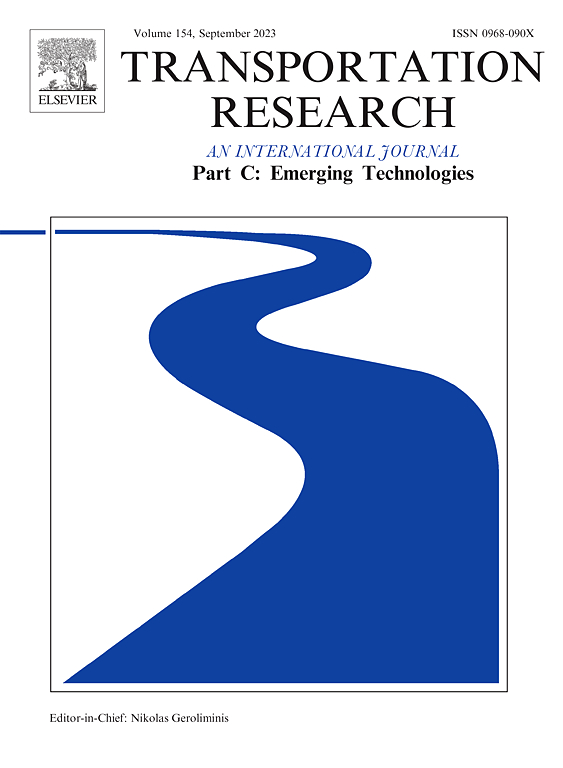多平台网约车市场效率低下,客户缺乏耐心
IF 7.6
1区 工程技术
Q1 TRANSPORTATION SCIENCE & TECHNOLOGY
Transportation Research Part C-Emerging Technologies
Pub Date : 2025-06-16
DOI:10.1016/j.trc.2025.105153
引用次数: 0
摘要
在竞争激烈的网约车市场中,每个参与平台只能利用总需求(乘客)和总供给(司机)的一部分。这种分散可能导致市场效率低下。本文引入了考虑外生乘客需求和车辆供给的多平台网约车市场均衡模型,并考虑了两种类型的乘客取消行为。在匹配过程中,引入了违背排队模型,允许乘客因不耐烦而取消排队。如果乘客对所提供的服务不满意,则纳入效用选择模型,允许他们取消服务。我们使用该模型来量化碎片化的影响,考察需求和供应水平的不同组合,说明不同的市场条件。我们研究了多个场景,其中包括多达10个对称平台和不对称双寡头。此外,我们构造并比较了对称双寡头和等价垄断的供给曲线。可以证明,在更广泛的市场条件下,与垄断相比,双寡头垄断将处于徒劳的追逐(WGC)状态,这在分散的市场中导致了效率低下。本文章由计算机程序翻译,如有差异,请以英文原文为准。
On the inefficiencies in the multi-platform e-hailing market with impatient customers
In a competitive e-hailing market, each participating platform can only utilize a portion of the total demand (passengers) and supply (drivers). This fragmentation may lead to market inefficiencies. In this paper, we introduce an equilibrium model of the multi-platform e-hailing market considering exogenous passenger demand and vehicle supply, and addressing two types of passenger cancellation behaviors. A queueing model with reneging is incorporated to allow passenger cancellations during matching due to impatience. A utility choice model is incorporated to allow passenger cancellations if they are dissatisfied with the service being provided. We use the model to quantify the effects of fragmentation, examining varying combinations of demand and supply levels, illustrating different market conditions. We investigate multiple scenarios, which include up to 10 symmetrical platforms and asymmetrical duopolies. Additionally, we construct and compare the supply curves of a symmetrical duopoly and an equivalent monopoly. It can be shown that the duopoly will be in the Wild Goose Chase (WGC) state for a broader range of market conditions compared to the monopoly, which gives rise to inefficiencies in a fragmented market.
求助全文
通过发布文献求助,成功后即可免费获取论文全文。
去求助
来源期刊
CiteScore
15.80
自引率
12.00%
发文量
332
审稿时长
64 days
期刊介绍:
Transportation Research: Part C (TR_C) is dedicated to showcasing high-quality, scholarly research that delves into the development, applications, and implications of transportation systems and emerging technologies. Our focus lies not solely on individual technologies, but rather on their broader implications for the planning, design, operation, control, maintenance, and rehabilitation of transportation systems, services, and components. In essence, the intellectual core of the journal revolves around the transportation aspect rather than the technology itself. We actively encourage the integration of quantitative methods from diverse fields such as operations research, control systems, complex networks, computer science, and artificial intelligence. Join us in exploring the intersection of transportation systems and emerging technologies to drive innovation and progress in the field.

 求助内容:
求助内容: 应助结果提醒方式:
应助结果提醒方式:


